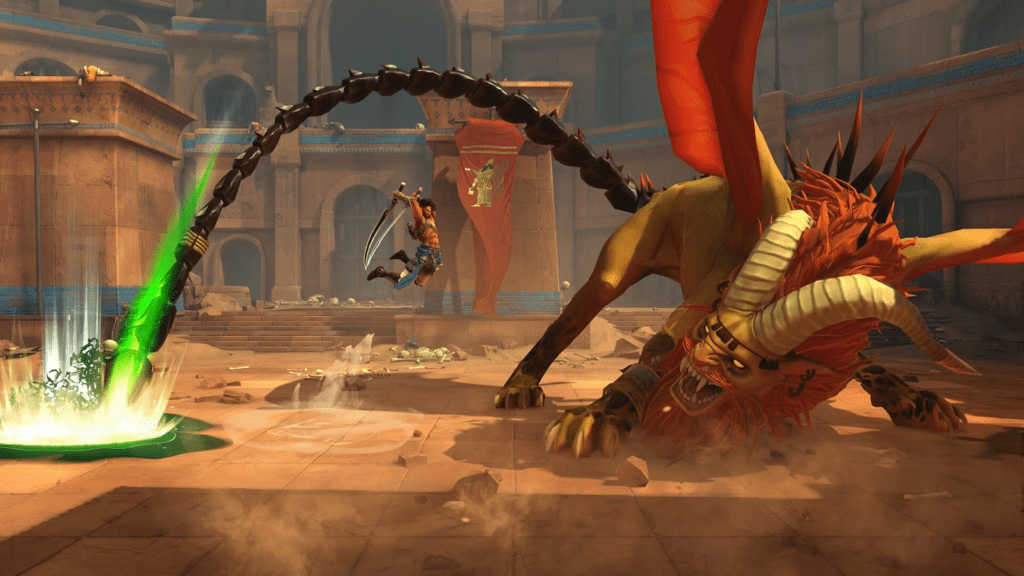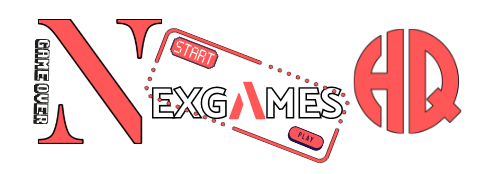
February 12, 2024
ANALYZES
PS5
Also on:
PS4
Xbox One
Xbox Series
Switch
I started to wonder how Prince of Persia wasn’t always a Metroidvania franchise after playing this game. A sleek 2D side-scrolling game, The Lost Crown comes with knowledge of the series’ history as well as a long list of modern influences to leave its own stamp and bring hope to one of Ubisoft’s neglected properties.
Prince of Persia: The Lost Crown is the much-needed breath of new air for this series. Sargon and the other Immortals who guard Persia could initially be another contentious departure from convention, along with the move back to 2D. This is especially true for fans who are excited for the next major Sands of Time-style adventure (or the ill-fated remake of the classic game). But in every way, The Lost Crown defies fan expectations, not just of the genre but also of the series.
The Lost Crown, while far from a total revamp, aims to simplify the Metroidvania experience by providing players with a fair challenge without being unduly complicated. This is a nice difference, as my usual encounters with the genre usually begin with hopeful optimism, a sense that this could be “the one” to finally “click,” and then end abruptly with me feeling disappointed at my own lack of knowledge. The gameplay still revolves around the typical theme of players finding an inaccessible place early on and being told to remember to return later after they’ve gained the necessary ability. But what I have never seen before is the addition of Memory Shards to identify locations on the map with a screenshot to go along with it. My fuzzy memories of where things were would no longer have to do; I had Memory Shards, albeit a limited supply, to help me navigate.
On paper, it might not sound amazing, but in reality, it completely changed the game. Particularly for the more easily distracted among us. The ability to add objective markers in “Guided Mode,” the game’s granular difficulty settings, and the accessibility features that let players skip entire challenging platforming sections—among other potentially important changes—all give the impression that the developers were making every effort to ensure that players of all skill levels could enjoy The Lost Crown. It is, of course, very possible for you to have a more conventionally brutal Prince of Persia experience. Throughout the entire game, I lack the patience and time for that, but for the pure joy of it, I would gladly spend an hour attempting a challenging optional platforming task.

There are many enemies and traps on Mount Qaf. Sargon is the master escape artist, thank goodness.
Everything in The Lost Crown revolves around the platforming. The wonderful sticky friction feel that permeates every action adds to the gameplay’s satisfying experience. Prince of Persia: The Lost Crown’s platforming satisfies a need in me that I wasn’t even aware I had, whether it’s just hopping from platform to platform, jumping over enemies to launch another attack, or running and sliding around the environment. Because the gameplay was so amazing, it enhanced the “I’ll get it this time — one more run” aspect of the game and all but eliminated actual frustration. Please understand that nobody enjoys being completely screwed over by a superior. But after a short delay at a handy Wak-Wak Tree, I was back in the action and prepared to take on that fight once more or explore even further of Mount Qaf in pursuit of a solution.
Of course, guiding Sargon across Mount Qaf will require you to overcome its enormity as well as the ridiculous encounters with mythological creatures and famous warriors that await you there. These boss battles began mildly, even though they were ridiculously large and strong, but in order to prevail, I had to employ all of my skills, dexterity, and cunning. No two boss encounters ever felt the same; instead, each one was like solving a rewarding battle puzzle. A couple of them may have been a bit too inexpensive for my tastes, but the challenges were always appropriately leveled thanks to careful planning, the resources at my disposal, and frequently the Amulets I had obtained.
Rather than having a skill tree, Amulets enable you give Sargon a restricted number of different augments, such as more damage, more health, and other typical unlockables found in games. Amulets are just another example of how The Lost Crown lets players choose their own route through the game. Amulets (and more Amulet spaces) are obtained through exploring the globe. The gameplay gained an additional, unexpected element of complexity when these Amulets were balanced and the appropriate construct was selected for a certain assignment or battle.

Leap, cut, or roll?
Sargon’s go-to three-hit combo in The Lost Crown’s (mainly) single-button fighting is likewise surprisingly straightforward. But after just a few hours of gameplay, combat can frequently flow seamlessly into and out of traversal. Sliding into a swift strike, avoiding, striking again, and then timing a flawless parry (resulting in a devastating killing blow) becomes second nature. These abilities will also be useful while exploring, as there are countless monsters and fantastical creatures hiding in every corner of the globe. Granted, most grunts can be eliminated with a few fast clicks on the square button, but it becomes more and more important to sequence strikes with slides and dodges and master that (quite wide) parry window. I’ve made it appear more complicated than my muscle memory recalls even when I write that out. Combat was simple for me to learn even if I’m not excellent with combos, but it had a high ceiling for mastery.
Prince of Persia: The Lost Crown is rife with the antiquated notion that things are “easy to learn, hard to master,” but not in the way you might have expected. During my time playing the game, I did run into a few brick walls, but I was rarely frustrated when I started a run or attempted a challenge. Even though I felt like I was progressing slowly at times, I always thought I was making progress or learning something new that would be useful for my next run. Regardless of how it’s accomplished, that kind of reinforcement is essential. I had the impression that the game itself wanted me to succeed, whether it was during a boss fight, a challenging platforming portion, or something else entirely.
When it comes to progression, the gameplay really does carry the majority of the load. The plot of Prince of Persia: The Lost Crown is largely a by-the-numbers affair, despite its occasional thought-provoking character moment and clever flip of phrase. With the exception of one or two people, the tale is presented primarily through motion-graphic cutscenes and voice acting that lacks passion, making for a dismal first impression. The degree of refinement found in every aspect of the gameplay surpasses that of would-be epic tales about the ancient mythology of Sargon, the lore of The Immortals, the fate of Persia, and the curse of Mount Qaf. The story feels like an afterthought to what is otherwise an absolutely faultless game, but the lore artifacts found in the environment help flesh out the setting, detail characters, and fill in the gaps.

Every boss had a catch in the tail, but this one takes the metaphor a bit too far.
Still, Mount Qaf’s immensity speaks for itself. I went through frightening tunnels, putrid sewers, gilded castles, and even a galleon ship trapped in time while playing as Sargon. The last level was one of the most beautiful I’ve seen in a game in a long time. The artwork in the game is lively and captivating. The foes each have a unique appearance and presence, and the colors pop, but it never gets too cartoonish. It’s very astounding how much scale there is. Sargon is frequently dwarfed by adversaries and architectural design, and exploring this cursed behemoth inspires a genuine feeling of wonder. It was always a thrilling and illuminating experience to battle through one section just to be thrown out in a spot I had only learned about hours before, gradually piecing together the connections throughout its ever growing map. Not only because of the final destination, but also because of the travel time.
It is evident that Ubisoft took inspiration from contemporary masterpieces like Dead Cells, Hades, and Celeste when creating Prince of Persia, as seen by the fact that players completed the mountain in less than 25 hours, despite leaving several side missions unfinished. On the other hand, characterizing The Lost Crown as borrowed genius would be very harsh. Like Sargon, this game has taken lessons from both the past and the present in an attempt to shape this cherished series’ bright future.
9
Prince of Persia: The Lost Crown, with its superb gameplay and truly amazing design, might become the new benchmark for the genre. A fantastic reboot that will delight lovers of Metroidvanias and Prince of Persia alike.

